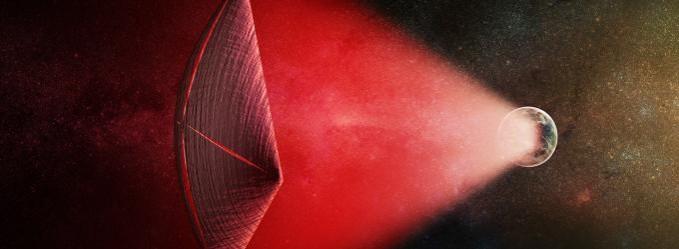
Back in August 24, 2001, mysterious radio wave signals were captured by the Parkes Observatory in Australia. The waves were coming from the direction of the Small Magellanic Cloud (SMC), also referred to as Nebucula Minor — a dwarf galaxy that orbits the Milky Way.
Also Read: ESO detects atmosphere around exoplanet GJ 1132b for the first time!
This mysterious blast lasted for a span of 5 milliseconds, but what made this explosion noteworthy was that the radiance it emitted was equal to a hundred million Suns!

This blast came back into the spotlight after it was uncovered by scientists sifting through Parkes' archived data in 2007.
Scientists have revealed that this phenomenon has never observed since, but they did detect similar signals, Fast Radio Bursts (FRBs) in other parts of space. They have observed less than a dozen FRBs thus far with the help of the Parkes Observatory and the Arecibo Observatory in Puerto Rico.
"Fast Radio Bursts are exceedingly bright given their short duration and origin at great distances, and we haven't identified a possible natural source with any confidence," theorist Avi Loeb of the Harvard-Smithsonian Center for Astrophysics said in a statement.
"An artificial origin is worth contemplating and checking," Loeb added.
It's guesstimated that these FRBs have originated from distant galaxies located billions of light-years away from Earth.
Loeb, along with his co-author Manasvi Lingam of Harvard University, analysed the possibility of creating a radio transmitter whose signals would be strong enough to be noticeable at such great distances.
The researchers found that if the transmitter was solar powered and placed in a sunlit region of a planet around twice the size of Earth, it would produce the energy required to make the signals detectable over such massive distances.
Current human technology and engineering knowhow is not at the level where we can construct such a mechanism, but it is theoretically possible according to the laws of physics, the statement revealed.
The researchers considered the feasibility of creating such a transmitter, but feared the underlying structure of the transmitter would melt due to the massive amounts of energy produced. They concluded that if the device was twice as big as Earth and water-cooled, it could withstand the heat.
The most sensible reason for building such a device, according to researchers, is that it would help drive interstellar light sails that could carry hefty payloads, weighing around a million tons.
"That's big enough to carry living passengers across interstellar or even intergalactic distances," added Lingam.
According to researchers, the transmitter would be required to focus a beam on it constantly, in order to power a light sail. That beam would be visible to spectators on Earth as the sail, its host planet, star, and galaxy are moving at a pace relative to us.
Its outcome would be a beam brushing across the sky, which would point in our direction for a moment. The unexplained recurrence of the beam, could help in providing crucial data regarding its artificial origin.
Loeb accepted the fact that his work is based on estimations. On being asked if these mysterious radio bursts were of alien origin, he stated, "Science isn't a matter of belief, it's a matter of evidence. Deciding what's likely ahead of time limits the possibilities. It's worth putting ideas out there and letting the data be the judge."
This research has been published in the Astrophysical Journal Letters and is available online.









!['Had denied Housefull franchise as they wanted me to wear a bikini': Tia Bajpai on turning down bold scripts [Exclusive]](https://data1.ibtimes.co.in/en/full/806605/had-denied-housefull-franchise-they-wanted-me-wear-bikini-tia-bajpai-turning-down-bold.png?w=220&h=138)



